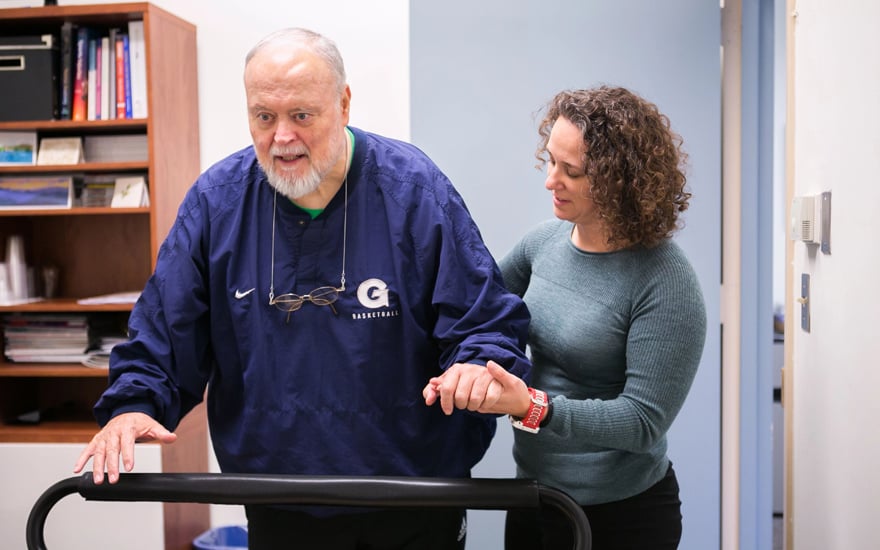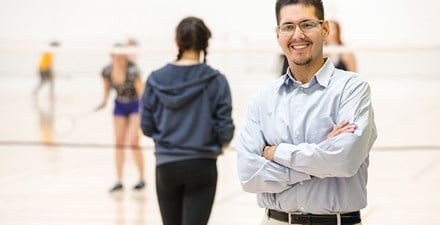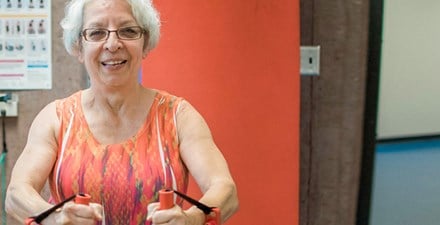Physical Therapy Guide to Walking Problems (Gait Dysfunctions)
Changes in your normal walking pattern are known as gait dysfunctions which often are related to a disease or problem in different areas of the body. Gait dysfunctions, or walking problems, are among the most common causes of falls in older adults, accounting for about 17% of falls. This guide will help you better understand how physical therapists categorize gait dysfunctions. It also describes how treatment by a physical therapist can help you restore a healthy gait. Physical therapists are experts at identifying the causes of gait dysfunctions. They design personalized treatment programs to help people improve or restore their gait.
Physical therapists are movement experts who improve quality of life through hands-on care, patient education, and prescribed movement. You can contact a physical therapist directly for an evaluation. To find a physical therapist in your area, visit Find a PT.
What Are Walking Problems (Gait Dysfunctions)?
Gait dysfunctions change the pattern of how you walk (your gait). Walking can require more effort and energy, and add stress to other parts of the body if you have a gait dysfunction. Some gait changes are related to an underlying medical condition, such as:
- Disorders involving the inner ear.
- Nervous system disorders such as Parkinson disease.
- Muscle diseases such as muscular dystrophy.
- Muscle, joint, or bone conditions or injuries.
Types of gait dysfunction include:
Antalgic. This type of gait dysfunction is often caused by bearing weight on a painful leg. It can be related to arthritis or a traumatic injury and results in limping. People with this type take slow and short steps. They quickly try to shift their weight off the sore leg, ankle, or foot, and back onto the unaffected leg.
Ataxic. A person with ataxic gait has inconsistent and erratic foot placement. To compensate they may have a wide-based stance (feet wide apart). It is often seen in people with:
- A condition of the cerebellum (a region at the back of the brain).
- Multiple sclerosis.
- Some types of stroke.
- Conditions with a major loss of sensation (feeling) in the feet or legs.
- Drug or alcohol intoxication. This may result in a temporary gait impairment that resolves once the substance is eliminated. Physical therapists do not address this type.
Parkinsonian. This type is often related to Parkinson disease. It results in people taking short, shuffled steps. Difficulty starting or stopping walking can accompany this dysfunction.
Steppage. This type occurs in people with "foot drop" (when a person is unable to lift their foot from the ankle). The foot will "slap" the ground when stepping onto the foot. A person will need to lift the affected leg higher, so the toe clears the ground when walking. Steppage is linked to conditions such as:
- Lumbar radiculopathy (a range of symptoms produce by a pinched or compressed nerve in the spine).
- Neuropathy (damage or loss of function in nerves causing numbness, muscle weakness or pain, often in the hands or feet).
- Muscle weakness related to stroke.
Vestibular unsteadiness. This pattern causes people to walk unsteadily, often falling toward one side. It is often linked to:
- Vertigo.
- Meniere’s disease (an inner ear condition).
- Labyrinthitis (a type of inner ear disorder in one ear).
Waddling. People with this type of dysfunction may walk on their toes, and sway side to side. It often arises from conditions such as:
- Muscular dystrophy.
- Myopathy (muscular diseases).
- Marked weakness of the large muscles of the hip and thigh.
Slow gait. This type of gait pattern is an overall slow speed of walking. It is often associated with:
- Age-related changes.
- Fear of falling; cautious walking.
Note: These are only a few of the many possible gait dysfunctions. If you suspect you are walking differently, contact a physical therapist for a gait assessment.
How Is It Diagnosed?
Physical therapists use a variety of strategies and tools to diagnose a gait dysfunction. While other health care providers can screen for conditions related to an abnormal gait, physical therapists are experts in diagnosing the type of gait dysfunction. They also have expertise in designing treatment plans to address them.
During your evaluation, your physical therapist will ask you questions, such as:
- When did you notice you were walking differently?
- Is the problem getting better or worse?
- Has it resulted in a fall or any additional problems?
- Are you in pain while you walk?
- Have there been any recent changes in your medical history, including changes in medications?
- How have changes in your walking impacted your daily life activities?
Your physical therapist also will conduct certain tests to learn more about your condition. Your assessment may include:
Observation. Your physical therapist will ask you to walk back and forth, to observe any problems in your gait pattern. These may include step length, width, and inconsistency in step time or path.
Gait speed measurements. Your physical therapist will time your walking speed.
Balance tests. Your physical therapist also may assess your balance to determine any contribution to your walking problem.
Strength and range-of-motion measurements. These tests can help determine whether your gait problem is due to muscle, bone, or joint limitations. Your physical therapist may use tools to measure your joint range of motion and your strength.
Reflex and sensation screenings. Your physical therapist may take measurements of your reflexes and assess the feeling in your feet and legs. These tests help them assess whether a brain or nervous system condition may be causing your gait problem.
Heart rate and blood pressure measurements. Your physical therapist will record your heart rate (pulse) and blood pressure before and after walking to determine the physical effort required and your conditioning.
How Can a Physical Therapist Help?
Physical therapists play a vital role in helping people improve their gait. Your physical therapist will work with you to address your specific needs and goals. They will design a personalized program to treat your specific condition.

Your physical therapy treatment plan may include:
Pre-gait training. Your physical therapist may begin your treatment by helping you understand how to improve your gait before you take a single step. Pre-gait exercises may include:
- Standing in place.
- Shifting your weight from one leg to the other.
- Moving your leg in stepping patterns that encourage the positions and muscle patterns used for good walking.
Gait training. Your physical therapist will help you focus on retraining how you walk. They may vary your training based on whether your underlying condition is:
- Vestibular (inner ear related).
- Neurological (brain or nerve related).
- Muscular.
Your physical therapist will design the safest and best program for your specific condition.
Balance and coordination training. Your physical therapist may prescribe balance activities and exercises to help with stability during walking.
Neuromuscular reeducation. Your physical therapist may use techniques to stimulate inactive muscle groups. They will work with you to retrain the timing, coordination, and activation of the muscles you use for walking.
Bracing or splinting. If your gait problem is due to substantial weakness or paralysis, your physical therapist may teach you how to use adaptive equipment, like a brace or splint, to help you move.
Can This Injury or Condition Be Prevented?
Gait dysfunctions are related to many different types of underlying conditions. You may not be able to prevent some types. However, if addressed and treated early, many gait dysfunctions can be improved. Improving your gait can help you avoid additional problems, such as:
- Falls.
- Stresses on joints and ligaments.
- Fatigue in daily activities.
What Kind of Physical Therapist Do I Need?
All physical therapists are prepared through education and experience to treat conditions such as gait dysfunction. However, when seeking a provider, you may want to consider:
- A physical therapist who is experienced in working with people who have gait dysfunctions. Some physical therapists have a practice with a geriatric, neurologic, or orthopedic focus.
- A physical therapist who is a board-certified clinical specialist or who completed a residency or fellowship in geriatric, neurologic, or orthopedic physical therapy. This physical therapist has advanced knowledge, experience, and skills that may apply to your condition.
You can search for physical therapists in your area who have these and other credentials by using Find a PT, the online tool built by the American Physical Therapy Association.
General tips when you're looking for a physical therapist (or any other health care provider):
- Get recommendations from family, friends, or other health care providers.
- When you contact a physical therapy clinic for an appointment, ask about the physical therapists' experience in helping people with gait dysfunctions.
- Be prepared to describe your symptoms in as much detail as possible.
The American Physical Therapy Association believes that consumers should have access to information that can:
- Help them make health care decisions.
- Prepare them for a visit with their health care provider.
The following articles provide some of the best scientific evidence for the treatment of gait dysfunctions. The articles report recent research and give an overview of the standards of practice both in the United States and internationally. The article titles are linked either to a PubMed* abstract of the article or to the free full text, so that you can read it or print out a copy to bring with you to your health care provider.
Fairhall NJ, Dyer SM, Mak JC, et al. Interventions for improving mobility after hip fracture surgery in adults. Cochrane Database Syst Rev. 2022;9(9):CD001704. Article Summary in PubMed.
McDonough CM, Harris-Hayes M, Kristensen MT, et al. Physical therapy management of older adults with hip fracture. J Orthop Sports Phys Ther. 2021;51(2):CPG1–CPG81. Article Summary in PubMed.
Brach JS, VanSwearingen JM. Interventions to improve walking in older adults. Curr Transl Geriatr Exp Gerontol Rep. 2013;2:230–238. Article Summary in PubMed.
DePaul VG, Wishart LR, Richardson J, et al. Varied overground walking-task practice versus body-weight-supported treadmill training in ambulatory adults within one year of stroke: a randomized controlled trial protocol. BMC Neurol. 2011;11:129. Article Summary in PubMed.
Morris ME, Martin CL, Schenkman ML. Striding out with Parkinson disease: evidence-based physical therapy for gait disorders. Phys Ther. 2010;90(2):280–288. Article Summary in PubMed.
King LA, Horak FB. Delaying mobility disability in people with Parkinson disease using a sensorimotor agility exercise program. Phys Ther. 2009;89(4):384–393. Article Summary in PubMed.
Rubenstein LZ, Josephson KR. Falls and their prevention in elderly people: what does the evidence show? Med Clin North Am. 2006;90(5):807–824. Article Summary in PubMed.
Lopopolo RB, Greco M, Sullivan D, et al. Effect of therapeutic exercise on gait speed in community-dwelling elderly people: a meta-analysis. Phys Ther. 2006;86(4):520–540. Article Summary in PubMed.
Jette DU, Latham NK, Smout RJ, et al. Physical therapy interventions for patients with stroke in inpatient rehabilitation facilities. Phys Ther. 2005;85(3):238–248. Article Summary in PubMed.
*PubMed is a free online resource developed by the National Center for Biotechnology Information. PubMed contains millions of citations to biomedical literature, including citations in the National Library of Medicine’s MEDLINE database.
Expert Review:
Dec 16, 2022
Revised:
Jan 23, 2023
Content Type: Guide
Walking Problems (Gait Dysfunction)
PT, DPT
Jessie M. VanSwearingen
PT, PhD, fellow of the American Physical Therapy Association
Kenneth L. Miller
PT, DPT, MA, board-certified clinical specialist in geriatric physical therapy, on behalf of the APTA Academy of Geriatric Physical Therapy.
You Might Also Like...
Podcast
A Sudden and Mysterious Walking Pattern Is Diagnosed, Inspires Career ChangeMar 20, 2018
Once a competitive gymnast, Laura was always very active, until she developed an unusual walking pattern when her foot stopped working.
Patient Stories
Physical Therapy Helps Man With a Traumatic Brain Injury Return to CollegeJul 29, 2017
Gerardo was lucky to survive a car crash that launched him more than 40 feet. His physical therapist got him back on his feet.
Patient Stories
Physical Therapy Helps Art Teacher Find Renewed YouthSep 15, 2016
"I learned that quality of movement is better than just 'getting it done.'"

